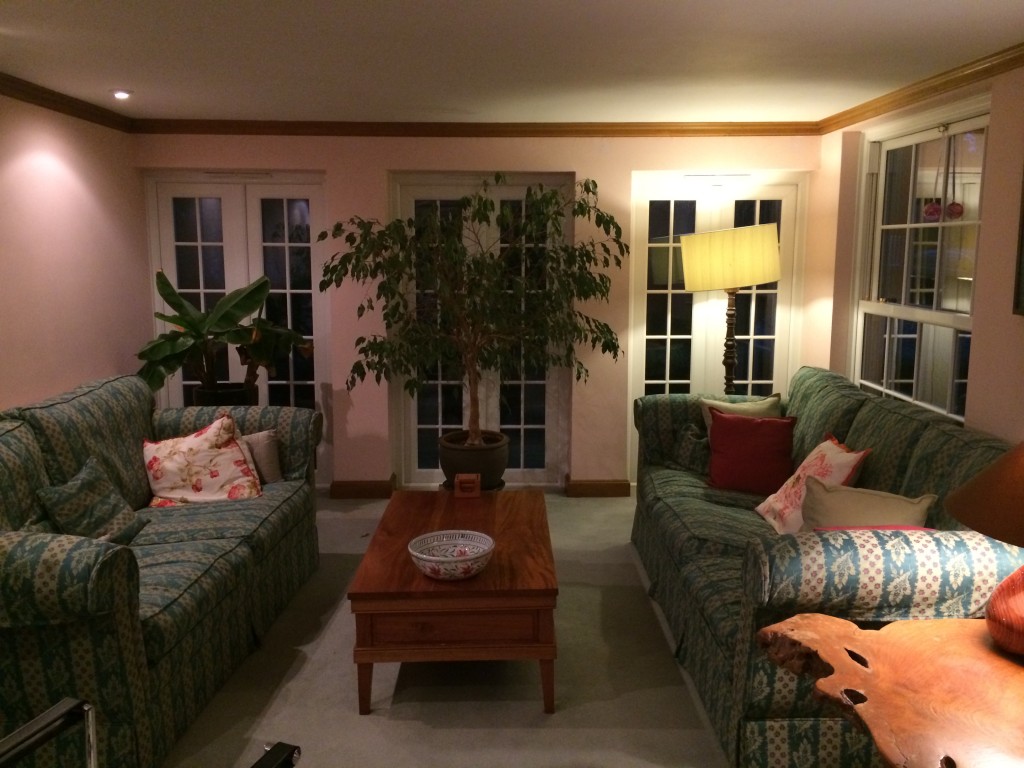MON - FRI: 08:00 - 05:00 PM

How to create flow in your home
We all seek flow in our homes.
Unfortunately, flow is one of those words. We know we need it. We just don’t know how to get it. It’s like ‘harmony’ or ‘presence’. It doesn’t come in a box!
Sometimes when designing and looking at an issue, the best thing to do is turn the situation on its head – to ‘deconstruct’ the problem. So rather than seek flow, why not look at the things that stop flow. And in removing them, we should create flow. Logical, n’est-ce pas?
Obstacles Preventing Flow in the Home
Obstacles are the most obvious things to stop flow. If something is in your way, you have to move around it. And yet I see many houses full to the brim with furniture and ‘stuff’. Stuff that stops flow.
Look at this collection of furniture blocking the door.

A good de-clutter is the obvious answer, but it’s not sexy. It’s cathartic, good for the soul but it doesn’t feel sexy. Shopping feels sexy but shopping is what got you into trouble in the first place. That’s why you’ve got all that stuff. So stick with the soul and de-clutter. Bin it, give it away, or make it into something else (but only if you do that immediately, don’t be holding on to it for a rainy day…)
Avoid Corners in a Room to Create More Flow
Obstacles also come in the way of corners. When you enter a room and encounter a corner, especially one at hip height, you have found yourself a potentially painful flow blocker. The side of a cupboard or wardrobe shouldn’t be right up against the wall as you enter the room. It is ‘looming’ and feels uncomfortable and not at all like flow.
As I write this I can hear you thinking I’m talking Feng Shui here. And you’re right. But let’s not get bogged down with ancient arts, let’s just accept that an obstacle gets in the way. So move it.
- Push the furniture at least 30cm away from the door’s entrance, ideally more.
- Allow the door to open widely.
- Allow the space in front of the door to be empty and create a ‘welcoming space’.
Space in the right places is what creates flow. (Yes, you can tweet me on that…)
Reducing Lines in a Room to Create a Good Flow in Your Home
Of course your home has lines. I don’t expect minimalism of anyone. But if you see nothing but lines – where wood meets carpet, where stone meets vinyl, where one material after another screams for your attention – you lose the sense of flow that a seamless, line-less environment can provide.
If you choose a single floor type (wood, carpet, tile) for the entire downstairs, the space will feel more flow than if you have different types for every room. Reducing the number of joints and junctions in a room, be it on the floor or on the wall (with a storage unit for example) will make it easier on the eye. We register every line, we follow that line, we want to see where it’s going. This should be a visual journey of delight. Not a disjointed horror of ‘bits’.
Reduce the number of visible lines and you will create flow.
Connecting Rooms with Lighting
Humans are guided by light. We seek the brightest spot in a room – be it a window or a spectacular light fixture. We rely on lights to show us the way – to indicate where to look.
If lighting is wrong, we could be guided in the wrong direction. We might attract attention towards something ugly (the fluorescent lit pile of dishes to wash in the kitchen) or we might leave a dark spot where we need illumination (in a corner for reading).

Lighting is a one of the most important tools in the interior designer’s tool box and is a trick of the trade when it comes to flow.
If you have excessive lines, obstacles at hip-height or are illuminating what should be best left in darkness, please get in touch for a ‘flow’ consultation.
Email: niki@nsid.co.uk
Website: www.nsid.co.uk
Mobile: + 44 (0)7782 256444
- Category :
- Type :


Comments
Just Say Your Opinion